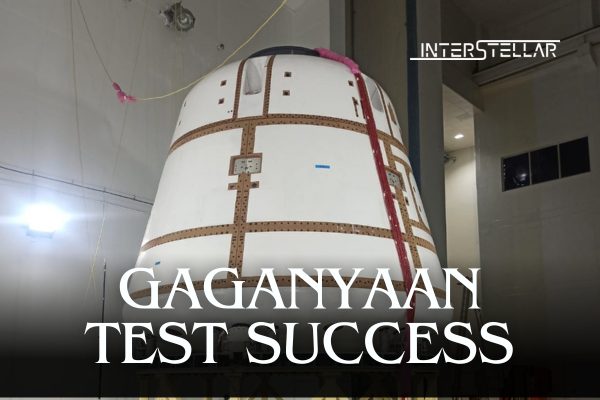ISRO’s Uncrewed Escape System Test Boosts Gaganyaan Mission
In a major milestone toward independent human spaceflight, the Indian Space Research Organisation (ISRO) successfully conducted an uncrewed Crew Escape System (CES) test early on Oct. 21. The test was part of India’s Gaganyaan program, which aims to establish autonomous human spaceflight capabilities. Launching from the Satish Dhawan Space Center, ISRO’s Test Vehicle Demonstration 1 (TV-D1) carried an unpressurised Gaganyaan crew module (CM) on a liquid-propellant single-stage test vehicle.
At 12:30 a.m. Eastern, the TV-D1 test vehicle launched, and just 61 seconds later, the CES separated from the vehicle at an altitude of 11.9 kilometres, reaching supersonic speeds. The CM then separated from the CES at 16.9 kilometres, deploying a drogue parachute to stabilise and slow its descent. Once the CM descended below 2.5 kilometres, the main parachute was deployed, and recovery teams retrieved the module from the Bay of Bengal, approximately 10 kilometres from Sriharikota.
ISRO Chairman S. Somanath proudly announced the mission’s success, affirming that the system can safely eject astronauts from the launch vehicle in case of emergency—a critical capability for future crewed missions.
…. and the slow-motion video of the TV-D1 Lift-off.
(No audio)
#Gaganyaan pic.twitter.com/K1LpVtu3bf— ISRO (@isro) October 21, 2023
Gaganyaan Program Prepares for Crewed Spaceflight
With the Gaganyaan program’s crewed mission tentatively scheduled for 2025, ISRO plans to conduct three uncrewed orbital test flights of the Gaganyaan Crew Module starting in 2024. If successful, India will join Russia, the US, and China as the only countries to have achieved independent human spaceflight.
Indian astronauts are already in training, and the successful TV-D1 test underscores India’s commitment to the program, despite delays. Originally announced in 2018, the Gaganyaan mission faced setbacks, including COVID-19-related disruptions, pushing its initial uncrewed launch target from December 2020.
Recent Achievements and Future Goals for India’s Space Program
The Gaganyaan test follows a year of notable accomplishments for India’s space program. On Aug. 23, India’s Chandrayaan-3 mission made it the fourth nation to successfully land on the Moon. Just days later, on Sept. 2, ISRO launched Aditya-L1, India’s first solar observatory, which is currently en route to the Sun-Earth Lagrange point 1.
India’s ambitions stretch even further. Prime Minister Narendra Modi recently announced a target to send astronauts to the Moon by 2040 and aims to establish a space station by 2035. Additionally, new policy reforms this year support increased commercial involvement and foreign investment, positioning India as a competitive space industry hub.





